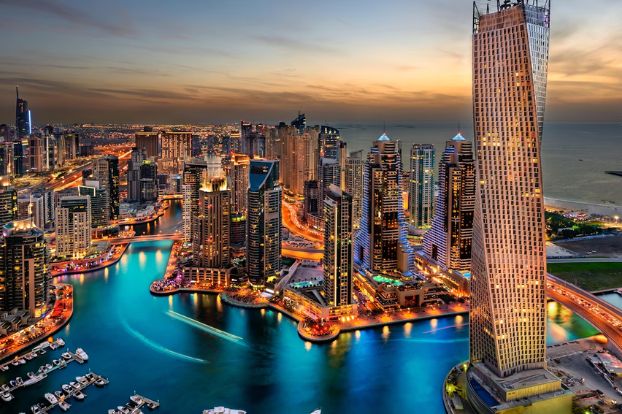Ultimate Dubai Travel Guide: How to Plan Your Perfect Trip (2025-2026)
How to Plan Your Trip to Dubai: A 2025-2026 Travel Guide
Hello, fellow traveler! So, you’re dreaming of Dubai? I get it. The vision of futuristic skyscrapers touching the clouds, vast golden deserts, and world-class luxury is hard to resist. As someone who’s planned countless trips to this incredible city (for myself and for friends), I can tell you one thing: a little planning goes a long, long way. It’s easy to feel overwhelmed by all the options, but that’s where I come in.
Think of me as your experienced friend who’s here to cut through the noise. This isn’t a generic checklist. This is a real, practical guide to help you plan your trip to Dubai for 2025 or 2026, ensuring you have a smooth, incredible, and stress-free vacation.
Step 1: When is the Best Time to Visit Dubai?
This is, without a doubt, the most important decision you’ll make. Visiting at the wrong time can literally make or break your trip.
In simple terms: the best time to visit Dubai is from November to March.
During these winter months, the weather is perfect. Think of a beautiful, sunny day with temperatures hovering between $20^{\circ}\text{C}$ and $25^{\circ}\text{C}$ ($70^{\circ}\text{F}$ – $77^{\circ}\text{F}$). It’s ideal for walking around the Dubai Marina, hitting the beach, or enjoying a desert safari without melting. This is the peak season, so the city is buzzing with energy and all the attractions are open.
My honest advice? Avoid visiting between June and August. This is the peak of summer, and temperatures regularly soar past $40^{\circ}\text{C}$ ($104^{\circ}\text{F}$) with intense humidity. You’ll basically be running from one air-conditioned building to another. While you can get great deals on hotels, it’s not the best experience for a first-timer who wants to explore.
Step 2: How Many Days Do You Really Need?
This is a common question, and my answer is usually the same: for a first-time trip, aim for 5 to 7 days.
This gives you enough time to see the highlights without feeling like you’re in a race.
- 3 Days: You can see the main icons (Burj Khalifa, Dubai Mall, one desert activity), but it will feel very rushed.
- 5 Days: This is the sweet spot. It gives you time to see the “big sights,” explore Old Dubai (the souks, the creek), enjoy a full-day desert safari, and even relax at the beach.
- 7 Days (or more): This is ideal if you want a more relaxed pace. You can add a day trip to Abu Dhabi (to see the stunning Sheikh Zayed Grand Mosque) or explore theme parks like Dubai Parks and Resorts.
Step 3: Getting Your Visa & Documents Sorted
Let’s get the “boring” but essential part out of the way.
First, check if you even need a visa in advance. Over 70 nationalities (including the USA, UK, Canada, Australia, and most of the EU) get a free visa on arrival. You just land, go to immigration, and get a stamp.
If you’re from a country like India, Bangladesh, or Pakistan, you will need to pre-arrange a visa. The good news is that the entire process is online (it’s an e-visa). You can’t apply directly; you need a “sponsor,” which is usually:
- Your Airline: Emirates and Etihad offer a very easy visa application process once you’ve booked your flight.
- Your Hotel: Many major best hotels in Dubai can also sponsor your visa, if you have a confirmed, paid booking with them.
- A Travel Agent: A registered agent can handle the entire process for you.
My advice: Whichever route you choose, start looking into the visa process at least 3-4 weeks before you fly to avoid any last-minute panic. And always make sure your passport is valid for at least six months after your travel date.
Step 4: Where to Stay (Choosing Your “Home Base”)
Dubai is a long city stretched along the coast, so picking the right neighborhood is key to saving time on travel.
- For First-Timers & Luxury Seekers (Downtown Dubai): If you want to be in the middle of everything, this is it. You’ll be right next to the Burj Khalifa and The Dubai Mall. It’s modern, walkable, and iconic, but also the most expensive.
- For Beach Lovers & Nightlife (Dubai Marina & JBR): This is my personal favorite. It’s a stunning canal city with skyscrapers, a beautiful beach (JBR), and countless restaurants and bars. It has a fantastic, energetic vibe.
- For Budget Travelers & Culture (Bur Dubai & Deira): This is “Old Dubai.” It’s full of character, home to the gold and spice souks, and has the most affordable accommodation. You’ll get a more authentic feel and can find great value.
Step 5: Planning a Realistic Daily Budget
Dubai can be incredibly expensive, but it doesn’t have to be. Here’s a simple, realistic breakdown per person, per day (excluding flights and your main hotel):
- Budget Traveler: $70 – $100 USD (AED 250-370)
- Accommodation: Staying in a hostel or a budget hotel in Deira.
- Food: Eating at food courts and local cafeterias (look for shawarma!).
- Transport: Using the Dubai Metro (get a Nol card).
- Mid-Range Traveler: $150 – $250 USD (AED 550-920)
- Accommodation: A 4-star hotel in Al Barsha or Dubai Marina.
- Food: A mix of food courts and casual sit-down restaurants.
- Transport: Using the Metro and occasional taxis or ride-hailing apps (Careem/Uber).
- Luxury Traveler: $500+ USD (AED 1,800+)
- Accommodation: A 5-star resort on the Palm Jumeirah or in Downtown.
- Food: Fine dining, brunches, and high-end restaurants.
- Transport: Mostly taxis, ride-hailing, or a private driver.
A pro-tip for everyone: Tap water in Dubai is perfectly safe to drink. Carry a reusable water bottle to refill at your hotel and in public fountains. You’ll save money and stay hydrated.
Step 6: My Top Tips for Your First Dubai Trip
These are the things I tell all my friends. Don’t skip these!
Getting Around is Easy (and Cheap!)
Dubai’s public transport is fantastic. As soon as you arrive at the airport, buy a Nol Card. This is your all-in-one rechargeable card for the Metro, buses, and trams. The Metro is clean, fast, and driverless (try to get in the first car for an amazing view!). For other trips, taxis are plentiful, and the local ride-hailing app Careem (which is owned by Uber) works perfectly.
What to Pack (The Dress Code Explained)
This is a huge source of confusion. Dubai is very modern, but it’s still a Muslim country. The simple rule is “respectful modesty.”
- In Public (Malls, Souks, Metro): You should cover your shoulders and knees. A t-shirt and jeans, or a maxi dress, are perfect. You do not need to cover your head unless visiting a mosque.
- At Your Hotel/Beach/Pool: You can wear your normal swimwear (bikinis, swim trunks) without any issues.
- Must-Pack Items: Bring light, breathable clothing (linen and cotton are your best friends), a scarf or pashmina (useful for sun protection and for freezing-cold air-conditioned malls), sunscreen, sunglasses, and a hat.
Respect the Local Culture
This is simple: be a good guest. Public displays of affection (like kissing) are a no-go. During the holy month of Ramadan (check the dates, as it changes yearly), it’s illegal to eat, drink, or smoke in public during daylight hours. However, restaurants in hotels and designated areas will still be open for tourists.
Don’t Just Stay in the “New” City
One of the best things to do in Dubai is to visit Old Dubai. Take a traditional “Abra” (wooden boat) across the Dubai Creek for just 1 AED. It’s the most authentic and charming experience in the entire city.
A Note on Work
Please remember that it’s illegal to work on a tourist visa. If your goal is to build a life here, your first step should be looking for latest Dubai jobs online and securing an offer. A company must sponsor your employment visa, which is a key part of our Dubai career guide.
That’s it! You’re ready to start booking. Planning a trip to Dubai is just the first step in an adventure you’ll never forget. Enjoy every moment of it.



[…] Read also: Plan Your Trip to Dubai: A 2025-2026 Travel Guide & Essential Tips […]